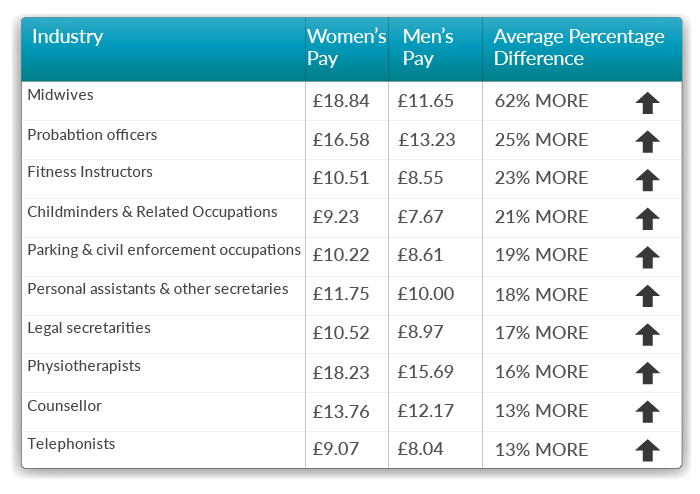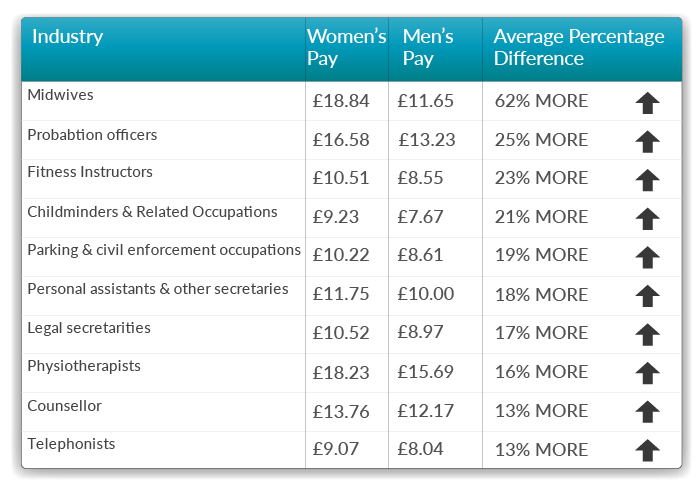BLOG
The gender pay gap - latest figures analysed
May 22 2017
Darren Best

 We spoke with Amy Leversidge, Employment Relations Advisor, from The London College of Midwifery to understand why this is:
“I suspect the reason these figures present a massive difference, is because there are so few male midwives. Over 99 percent of midwives are women- 130 are men. In fact, all NHS staff who are not doctors, dentist or senior managers, are paid under a gender for change system, (where) pay rates are matched against each other. Therefore, it seems this is likely to be a statistical anomaly due to the number of male midwives, rather than an issue to do with pay”.
In accordance with what Amy claims, does this act as evidence that the gender pay gap may be valid in accordance to gender popularity in certain industries?
According to data collected by Savoystewart.co.uk, this is an unacceptable excuse for the gender pay gap:
We spoke with Amy Leversidge, Employment Relations Advisor, from The London College of Midwifery to understand why this is:
“I suspect the reason these figures present a massive difference, is because there are so few male midwives. Over 99 percent of midwives are women- 130 are men. In fact, all NHS staff who are not doctors, dentist or senior managers, are paid under a gender for change system, (where) pay rates are matched against each other. Therefore, it seems this is likely to be a statistical anomaly due to the number of male midwives, rather than an issue to do with pay”.
In accordance with what Amy claims, does this act as evidence that the gender pay gap may be valid in accordance to gender popularity in certain industries?
According to data collected by Savoystewart.co.uk, this is an unacceptable excuse for the gender pay gap:
- Out of nine of the industries where women are earning more than men, the highest pay gap presents a difference of earnings of up to 25% more at the most.
- However, out of 10 of the industries where men are being paid more than woman, the difference in earnings were all higher than 26%.
- This is explored further when looking at Financial Managers and Directors, women are paid 36% less than men. However, the disparity between the presence of men to women in these sectors, are only 59:41.
- Comparatively, female personal assistants and secretaries are paid 17.5% more than men, although 91% of the industry is taken up by females.
- Similarly, 44% of females work as a medical practitioner, yet the gender pay gap stands at 29% for the industry; whereas 68% of physiotherapists are women, yet the pay gap is a lot smaller, with men earning just 16% of what women earn.
